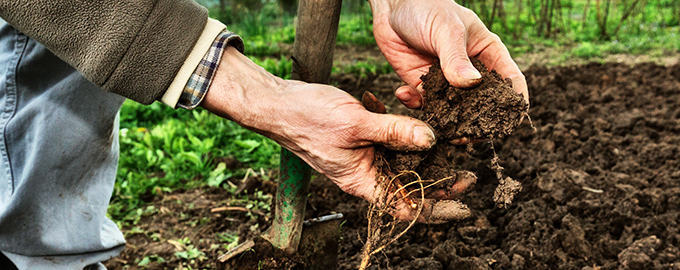Stocktaking on soil quality indicators and decision support tools

Implementing sustainable management of agricultural soils requires the ability to assess soil functions and the provision of ecosystem services. A report from EJP SOIL presents a synthesis on the development and usage of soil quality indicators and associated decision support tools, from past and on-going European research.
The objective of the synthesis was to evaluate efforts across Europe in order to enable harmonized and standardized use of soil quality indicators.
What is soil quality?
Soil quality means an account of the ability of soil to provide ecosystem and social services through its capacities to perform its functions and respond to external influences. The term soil quality encompasses a broad spectrum of features and considers functional ability together with the response properties of the soil.
Soil quality therefore provides a complex information on the sum of different soil characteristics, with regards to the level of ecosystem services a soil can provide. Soil quality indicator is perceived as a parameter used to quantify and valuate impacts of agricultural soil management practices on soil quality and the environment to draw conclusions for the farming practice or agricultural policy.
Survey on soil quality indicators
The aim was to obtain information on soil quality indicators, what indicators were used, the purposes of the indicators, together with information on the availability and sources of data. A survey based on questionnaires completed by participating countries/partners EJP SOIL revealed a wide range of information on soil properties based on almost 200 sources of information on soil qualitative characteristics.
Based on the information, eight groups of soil quality indicators can be listed:
- Evaluation of soil organic matter status in terms of quantity, stocks and quality, as well as the time frame, i.e. changes in carbon content over time
- Evaluation of nutrient status of soils including contents of main macronutrients and micronutrients
- Evaluation of soil pH and evaluation of related information about soil sorption complex;
- Evaluation of physical parameters of soil as texture, stoniness, porosity, and bulk density;
- Evaluation of soil water content and behaviour through water field capacity, wilting point, available water capacity, and infiltration;
- Description of physical degradation of soils including soil compaction, soil structure degradation, and soil erosion;
- Description of chemical degradation of soils including contamination with potentially toxic elements and organic pollutants, and salinization;
- Evaluation of biological parameters of soils especially biological activity, potentially mineralizable nitrogen, microbial biomass content, abundance of specific group of organisms, or various enzymes measurement.
Differences in use of soil quality indicators
Among the most common soil parameters are organic carbon concentration in soils and its changes in time, contents of macronutrients (N, P, K) and micronutrients (Cu, Mn), soil pH, cation exchange capacity and base saturation of soils, soil texture and bulk density, and contamination with potentially toxic elements especially Cd, Co, Cr, Cu, Ni, Pb and Zn.
In contrast, evaluation of water content is one of the less monitored soil characteristics.
Contamination with organic pollutants is addressed in about one third of the participating countries. Biological parameters are generally the least frequently evaluated indicators of soil quality in Europe. Biological activity is most often evaluated through soil respiration, but only in seven of the participating countries.
Information are often freely available
With regard to the general goal of the questionnaire (usage of soil quality indicators) there are some soil quality indicators frequently used in national legislations and as policy maker´s tools (e.g., nutrient contents, heavy metals contents, pH, hazard of soil erosion, organic pollutants contents) whereas soil organic carbon was mentioned the most.
Information about soil is often freely available on the Internet, either in the form of the data itself or geodatabases with map outputs. The range of ICP tools used is based on this. Computers and smartphones are most often mentioned in the questionnaire. But the survey also showed that many respondents are not familiar with national or EU legislation relating to soil issue and many respondents do not distinguish terms: legislation and policy maker´s tools, answers are the same or similar.
Contact
- doc. Ing. Lenka Pavlů, Ph.D., Department of Soil Science and Soil Protection, Czech University of Life Sciences Prague.
E-mail: pavlu@af.czu.cz - Assoc. Prof. RNDr. Jaroslava SOBOCKÁ, CSc., National Agricultural and Food Centre – Soil Science and Conservation Research Institute.
E-mail: jaroslava.sobocka@nppc.sk